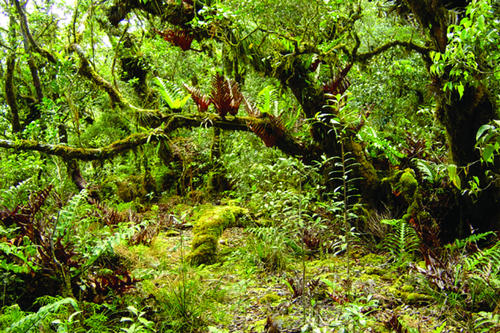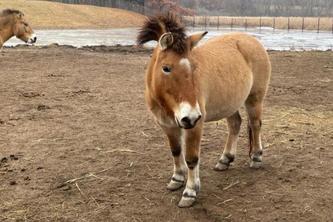
Where is the world’s greatest concentration of unique species of mammals? A team of American and Filipino authors have concluded that it is Luzon Island in the Philippines. The 15-year project, summarized in a paper published in the scientific journal Frontiers of Biogeography, has shown that out of 56 species of non-flying mammal species that are now known to live on the island, 52 live nowhere else in the world.
“We started our study on Luzon in 2000 because we knew at the time that most of the native mammal species were unique to the island, and we wanted to understand why that is the case,” said Lawrence Heaney, the project’s leader, who is the Negaunee Curator of Mammals at The Field Museum in Chicago.
Co-author Sharon Jansa, curator of mammals at the University of Minnesota’s Bell Museum of Natural History, played a key role in the project. Her lab conducted the DNA sequencing that enabled the discovery of 28 new mammal species on Luzon. 19 of these species have been formally described in scientific journals, and the rest are in progress.
On islands, scientists sometimes see a “sped-up” version of evolution—when animals are closed off from the rest of the world, in places where there are few or no predators or competitors, they adapt to novel habitats and eventually form new species. And not only is the island of Luzon isolated, but it’s covered in mountains. The mountaintops form what scientists call “sky islands”—little pockets of distinctive habitat that the animals further adapt to. “The animals are isolated high on the scattered mountains, so they inevitably diverge. Given enough time, you begin to see huge biodiversity,” explained Heaney. “In the process of trying to understand how that happens, we doubled the number of known species on Luzon.”
Most of the new species live in tropical cloud forest high in the mountains, where frequent typhoons can drop four or five meters (12 to 15 feet) of rain per year. Among the 28 new species discovered by the team are four species of tiny tree-mice with whiskers so long they reach nearly to their ankles. This new genus was named Musseromys in honor of Guy Musser, an emeritus curator at the American Museum of Natural History who made immense contributions to rodent systematics. The type species was given the epithet gulantang, which means “highly surprising” in Tagalog.
"Discovering species like these tree-mice is so incredible, because we aren’t just adding new leaves to the tree of life; we’ve added entirely new branches just for the Philippines,” said Jansa. “We are discovering new species of mammals all the time. Sometimes we find them by exploring new places; sometimes we find them lurking in museum collections. There is still so much to learn about life on Earth—and that is really exciting.”
The prospect for future research and discovery is abundant, and critical to sustaining biodiversity in the Philippines and around the world. The project findings are already part of ongoing work by Jansa’s graduate research assistant, Dakota Rowsey, a Ph.D. candidate in the Ecology, Evolution and Behavior department at the University of Minnesota. “Learning about the tremendous diversity of mammal species present on Luzon is crucial to conservation efforts,” explained Heaney. “In order to be effective at conserving an environment, we have to know what’s out there.”
About the Project Team
Heaney and Jansa’s co-authors are Danny Balete at the Field Museum; Mariano Roy Duya and Melizar Duya at the University of the Philippines; Eric Rickart at the Natural History Museum of Utah; and Scott Steppan at Florida State University. The team works closely with conservation organizations and the Philippine government, and many of their recommendations regarding expanded and new national parks have been adopted.
About the Bell Museum
The Bell Museum is Minnesota’s state natural history museum, founded in 1872. The museum is part of the University of Minnesota's College of Food, Agricultural and Natural Resource Sciences, and is set to open a new museum and planetarium in 2018. Our mission is to ignite curiosity and wonder, explore our connections to nature and the universe, and create a better future for our evolving world. For details, visit bellmuseum.umn.edu.
- Categories:
- Science and Technology





